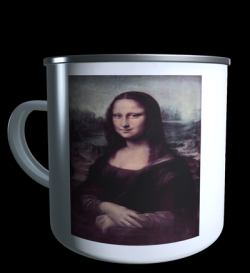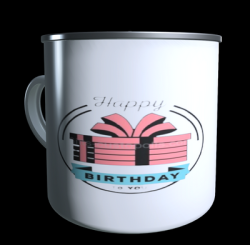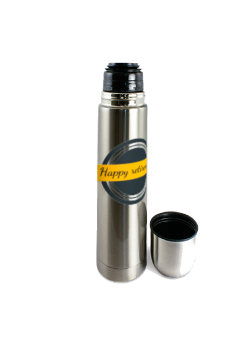Vintage mug to personalise...
History of the cup Long ago, before we had cups or even pots, people drank from clay calabashes or jars that they made themselves by hand using the local materials available at the time. No wonder it took them so long to invent a pottery vessel that could keep a liquid hot or cold without burning up! As to who actually invented the cup, it is not entirely clear! But it was in ancient times that pottery cups were used for drinking water and other beverages in Asia and Africa, as well as in Europe and North America. The oldest cups found in different parts of the world are clay vessels that were discovered in Egypt during excavations conducted between 1933 and 1938 by the archaeologist Amelia Biliotti. They date back to 4000 BC and have certain similarities with today's ceramic cups. In ancient times, drinking vessels were mainly used to store water, not to drink it, as most modern glasses are today! The cup used to be made of wood in the countryside, and of thick earthenware in the cabarets where it was often decorated with floral motifs.










































